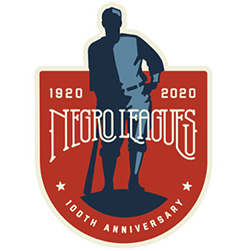 MLB Commissioner Rob Manfred today announced the elevation of the seven Negro Leagues to Major League status, continuing the game’s 2020 celebration of the creation of the Negro National League in 1920.
MLB Commissioner Rob Manfred today announced the elevation of the seven Negro Leagues to Major League status, continuing the game’s 2020 celebration of the creation of the Negro National League in 1920.
The action means a rewriting of baseball’s historical records. The statistics and records of the 3,400 Negro Leagues players in 1920-1948 will become a part of Major League Baseball’s history, pending further study. The initial data for these player records will come from the Seamheads Negro Leagues Database, with the Elias Sports Bureau also conducting additional research.
The designation comes after years of study and consultation with the National Baseball Hall of Fame and Museum and other baseball entities, according to an MLB press release.
“All of us who love baseball have long known that the Negro Leagues produced many of our game’s best players, innovations and triumphs against a backdrop of injustice,” Manfred said via press release. “We are now grateful to count the players of the Negro Leagues where they belong: as Major Leaguers within the official historical record.”
A main argument in past years against including Negro Leagues records in the Major League universe was that records were incomplete or inaccurate. But a new generation of baseball researchers overturned that assumption, discovering additional facts, statistics, and context that exceed the criteria used by the Special Committee on Baseball Records in 1969 to identify six “Major Leagues” since 1876. As a result, MLB and the Elias Sports Bureau have begun a review process to determine the full scope of this designation’s ramifications on statistics and records. MLB and Elias will work with historians and other experts in the field to evaluate the relevant issues and reach conclusions upon the completion of that process.
“It is MLB’s view that the Committee’s 1969 omission of the Negro Leagues from consideration was clearly an error that demands today’s designation,” according to today’s press statement.
“The perceived deficiencies of the Negro Leagues’ structure and scheduling were born of MLB’s exclusionary practices, and denying them Major League status has been a double penalty, much like that exacted of Hall of Fame candidates prior to Satchel Paige’s induction in 1971,” said John Thorn, the Official Historian of Major League Baseball. “Granting MLB status to the Negro Leagues a century after their founding is profoundly gratifying.”
“The Negro Leagues Baseball Museum is thrilled to see this well-deserved recognition of the Negro Leagues,” said Bob Kendrick, President of the Negro Leagues Baseball Museum in Kansas City. “In the minds of baseball fans worldwide, this serves as historical validation for those who had been shunned from the Major Leagues and had the foresight and courage to create their own league that helped change the game and our country too. This acknowledgement is a meritorious nod to the courageous owners and players who helped build this exceptional enterprise and shines a welcomed spotlight on the immense talent that called the Negro Leagues home.”
For the record: the seven leagues that comprised the Negro Leagues of 1920-1948 were the Negro National League (I) (1920–1931); the Eastern Colored League (1923–1928); the American Negro League (1929); the East-West League (1932); the Negro Southern League (1932); the Negro National League (II) (1933–1948); and the Negro American League (1937–1948).
RELATED STORIES: 100 years later, Negro Leagues legacies still emerging; MLB to honor Negro Leagues today; Ballparks That Live On: Former Negro Leagues ballparks
